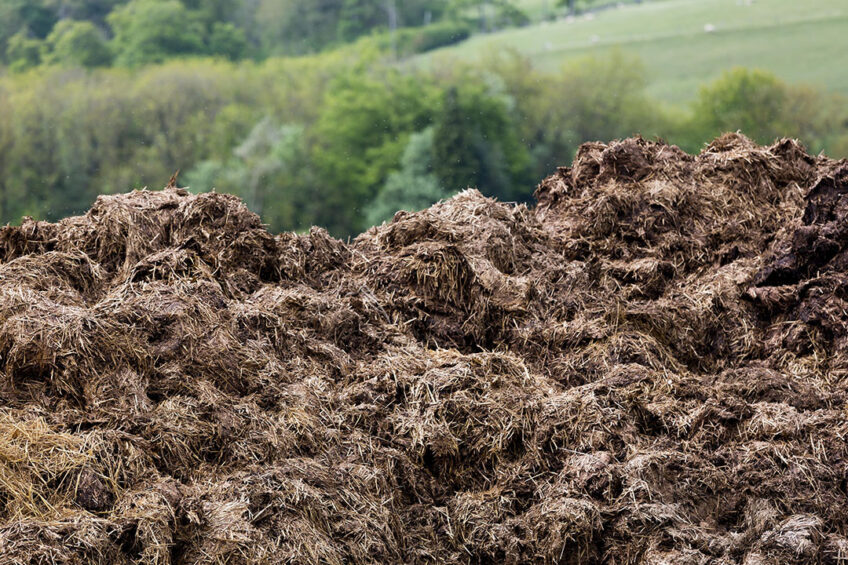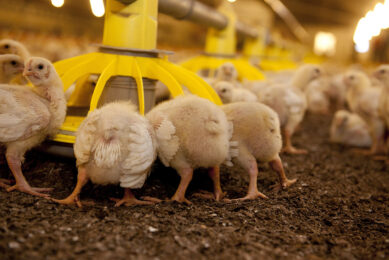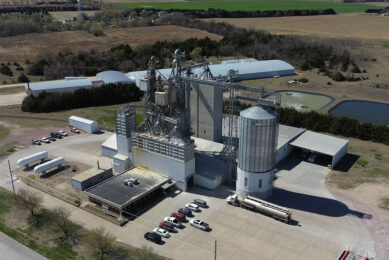The fate of antibiotics in livestock manure

The excretion rate of antibiotics in manure, impact of antibiotics on manure treatment, and their fate during storage, anaerobic fermentation, or composting process will discussed in this article.
ANTIBIOTIC REDUCTION SPECIAL 2023 – read all articles
The increasing global population has led to an increased demand for animal protein and a shift from extensive to intensive livestock farming systems.
Antibiotic use in intensive livestock farming
Intensive livestock farming is characterised by the application of antibiotics as growth promoters which led to public health concerns related to antibiotic resistance. Approximately 172, 148, and 45 mg antibiotics are used per kg of living or slaughtered animal in swine, chicken, and cattle breeding operations, respectively. Antibiotics are partially absorbed in the gut and/or poorly metabolised based on their structure. Subsequently, antibiotics are transferred into manure; thus, they enter different environmental compartments where they can persist for many years or even decades.
Excretion rates of antibiotics in manure
Antibiotic excretion rate is assessed using the percentage of radiocarbon recovered in faeces. Various research studies have evaluated the antibiotic excretion in livestock manure.
- In steers fed monensin, 75% of this antibiotic was excreted after 3 days in the faeces; however, no excretion occurred via the urine. After 7–11 days, the recovery accounted for 88–100%.
- In beef cattle fed fluoroquinolones, 91% of the radioactivity was recovered with 67.4% being excreted via faeces.
- In layer hens the excretion rate of ciprofloxacin was between 45% and 52% within 33 days.
- In broilers fed enrofloxacin via drinking water the excretion rate was 74%.
- In pigs, sulfadiazine excretion rate was 96% after 10 days and in total, 44% of the applied sulfadiazine was excreted in unaltered form.
- In fattening pigs fed sulfamerazine, sulfachloropyridazine, sulfadimoxine, and sulfaquinoxaline the excretion rate increased with decreasing polarity of the respective sulfonamide, resulting in the highest excretion rates for sulfaquinoxaline (85%) and sulfachloropyridazine (62%) after 13 days. In addition, sulfadimoxine and sulfamerazine possessed comparable excretion rates of 38% and 43%, respectively.
- In dairy cows, 20% of the injected oxytetracycline was excreted over 20 days. Oxytetracycline forms stable complexes with metal cations and is incorporated into bones which can lead to a comparable low excretion rate.
- In laying hens, the excretion rate of doxycycline was between 83% and 96% after 15 days. The excretion rate of amoxicillin, a beta-lactam antibiotic, was between 56% and 68% after 12 days. Beta-lactams can be easily cleaved under acidic or mild alkaline conditions, but they are more stable under weak acidic or under physiologic conditions.
- In weanling pigs administered lincomycin (lincosamide) and spectinomycin (aminoglycoside) via feed, the excretion rates were 32% and 3% for lincomycin and spectinomycin, respectively, based on manure sample analysis after 5 weeks.
The species-specific differences, the antibiotic route of administration, antibiotic classes, and the collection time of the excrement impact the excretion rate of antibiotics. Injection results in a bypass of the digestive tract whereas an application via feed may cause interactions of the active compound with feed components, thus lowering gut absorption levels. Various research studies mentioned employed manure collection times between 10 and 38 days; however, it is implied that 10 days are sufficient for a comprehensive result.
Impact of antibiotics on manure treatment
Antibiotics act against Gram-positive and Gram-negative microorganisms, thus impacting the processes in which microorganisms are involved such as biogas production during anaerobic fermentation. Anaerobic digestion is comprised of four steps including hydrolysis, acidogenesis, acetogenesis, and methanogenesis which contribute to the biogas production. Sulfonamides have no or only minor effects on the biogas yield even in concentrations up to 280 mg per litter. Danofloxacin and micospectone, a mixture of spectinomycin and lincomycin, has a greater impact on the biogas production than on the methane yield. Oxytetracycline decreases the biogas yield but has no impact on methane production. Colistin, a polymyxin antibiotic, enhances biogas and methane yield during batch fermentation of manure. It is notable that factors including dry matter content, retention time, and respective incubation time influence the antibiotics and their potential to influence the biogas and methane production.
Digestion, manure storage, and composting
Trimethoprim, which inhibits the synthesis of folic acid and is usually applied in combination with sulfonamides for synergetic purposes, is eliminated by more than 99% during anaerobic digestion. The fast elimination of this synergist could be one reason for the non-observed effects of sulfonamides on biogas production even in high concentrations. Elimination rates reported for sulfadiazine or tetracycline during anaerobic batch digestion, and sulfamethazine during composting are between 0% and 100%, suggesting that many antibiotics are not innately degradable, but their elimination depends on specific conditions employed in the respective experimental setup. In addition, tetracyclines and monensin are eliminated to a higher extent at 55 °C than at 22 °C or 38 °C within digestion treatments. The amount and type of solid particles present in the system impacts the elimination rate; therefore, in composting studies elimination rates are usually above 90%. Manure dilution with water increases the elimination rate of tylosin. In addition, during manure storage, a complete degradation of antibiotics does not take place and most antibiotics remain in the matrix as initial compound or as non-volatile transformation product.
Rules for antibiotic administration
The increasing demand for animal-derived foods has led to intensive and large-scale livestock production with the consequent formation of large amounts of manure. On the other hand, antibiotics are frequently detected in livestock manure due to their excretion in considerable amounts. It is notable that factors including the species-specific differences, the antibiotic route of administration, antibiotic classes, and the collection time of the excrement impact the excretion rate of antibiotics. In addition, dry matter content, retention time, and respective incubation time influence the antibiotics and their potential to influence the biogas and methane production. In countries with intensive livestock farming and high usage of antibiotics, authorities should consider legislative measures to lower the antibiotic input into the environment. These actions include strict regulatory rules regarding antibiotic administration in livestock husbandry, and implementation of maximum residue values regarding the antibiotic content of manure utilised for soil fertilisation.
References are available on request.
Article is based on research paper “Occurrence and fate of antibiotics in manure during manure treatments: A short review” by Astrid Spielmeyer. Sustainable Chemistry and Pharmacy volume 9, 2018.







